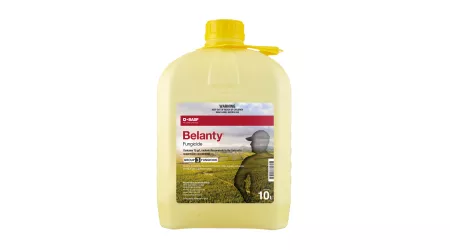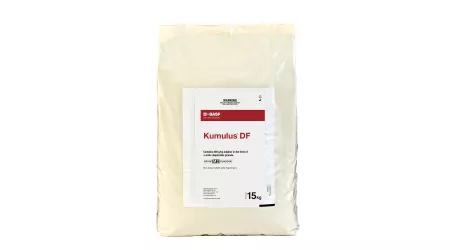Powdery mildew is a scourge of viticulturists and is one of the key diseases targeted in the fungicide spray programme. Get it wrong and foliage and berries in your vineyard can take on the characteristic furry, and somewhat dirty, appearance as the infection takes hold. But get it right, using a good mix of fungicides with different modes of action (MoAs) and the grapes will remain glossy green through harvest.
Chemical rotation is essential to ensure you manage the threat of resistance as well as disease, and BASF has four fungicides from five different MoA groups to help control powdery mildew.
Kumulus® DF (sulphur, MoA group M02), a veteran of the grape spray programme, is a key treatment for powdery mildew from early season through to harvest. Kumulus can also be used as a tank-mixing partner for other powdery mildew fungicides that have a single-site MoA in the fungal pathogen, as required by Sustainable Wines NZ (SWNZ). Kumulus is also BioGro registered (BioGro No. 4908).
Belanty® (mefentrifluconazole, MoA group 3) is one of the single-site fungicides that should be tank-mixed with Kumulus. Belanty was launched in 2021 as the first of a new generation of demethylation inhibitor (DMI) fungicides. It has outstanding activity against powdery mildew and when used at pea-size or pre-bunch closure (the withholding period – WHP, see table below) can give all-round protection of grape and rachis before the bunches close up. Note that while two applications are permitted on the label, SWNZ allows one DMI application per season.
Vivando® (metrafenone, MoA group 50) is another single-site fungicide that can be tank-mixed with Kumulus. While Vivando has flexibility around where the two permitted sprays are placed in the spray programme, its short WHP (see table below) means it is best suited late in the programme.
Pristine® (boscalid + pyraclostrobin, MoA groups 7 and 11) is a co-formulation of a succinate dehydrogenase inhibitor (SDHI) and a strobilurin fungicide. It has activity against powdery mildew, botrytis and downy mildew, but there may be resistance in the powdery mildew pathogen to pyraclostrobin. The Pristine label allows for two applications per season and they can be used to help control downy mildew, which has become a greater problem during the wetter summers most of New Zealand has experienced recently.
With downy mildew becoming a focus of fungicide applications across a wider area, Delan® WG (dithianon, MoA group M09) comes to the fore, particularly with the demise of mancozeb in the European market. Delan is also used to control black spot (anthracnose) in warmer/damper grape-growing regions. Polyram® DF (metiram, MoA group M03) is another option for downy mildew control (see table below for withholding periods).

For weed control in vineyards, Buster® (glufosinate, MoA group 10) is a strong option for viticulturists wanting an alternative to glyphosate and is safer around young vines (it has contact activity only). Stomp® Xtra (pendimethalin, MoA group 3) can also be used to introduce another herbicide MoA for improved resistance management. Stomp Xtra’s residual activity gives it a point of difference, but it has to be applied early season to bare soil around dormant vines and requires rain or irrigation within 10 days after application for optimal performance.
With so many great options to mix and match, please bear in mind that it’s vital to follow label directions and check the compatibility of potential tank-mix partners.
ACVM registration numbers: Belanty® #P009798, Buster® #P003064, Delan® #P003507, Kumulus® DF #P003493, Polyram® #P002062, Pristine® #P007595, Stomp® Xtra #P005921, Vivando® #P007973. Read registered label before use.



